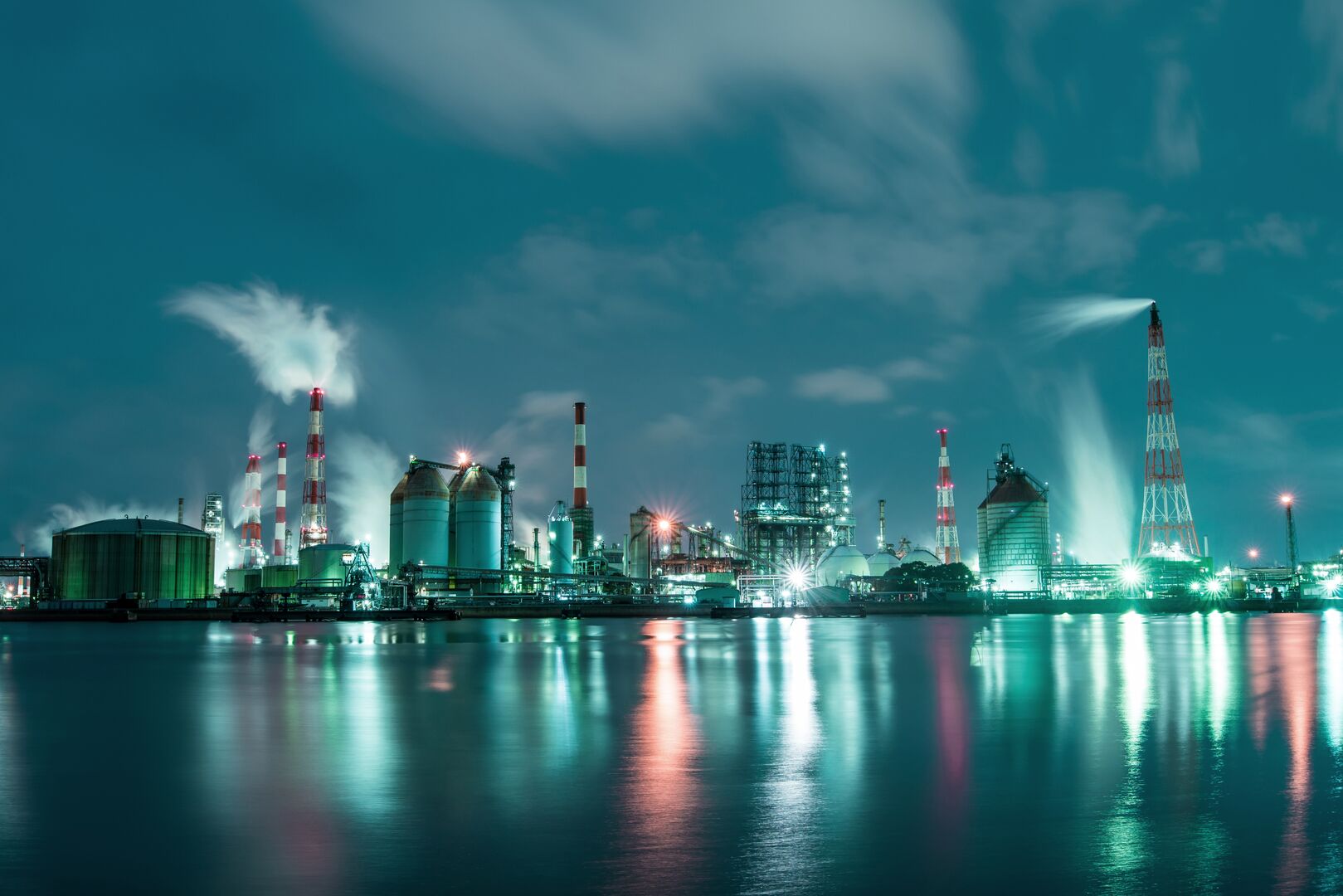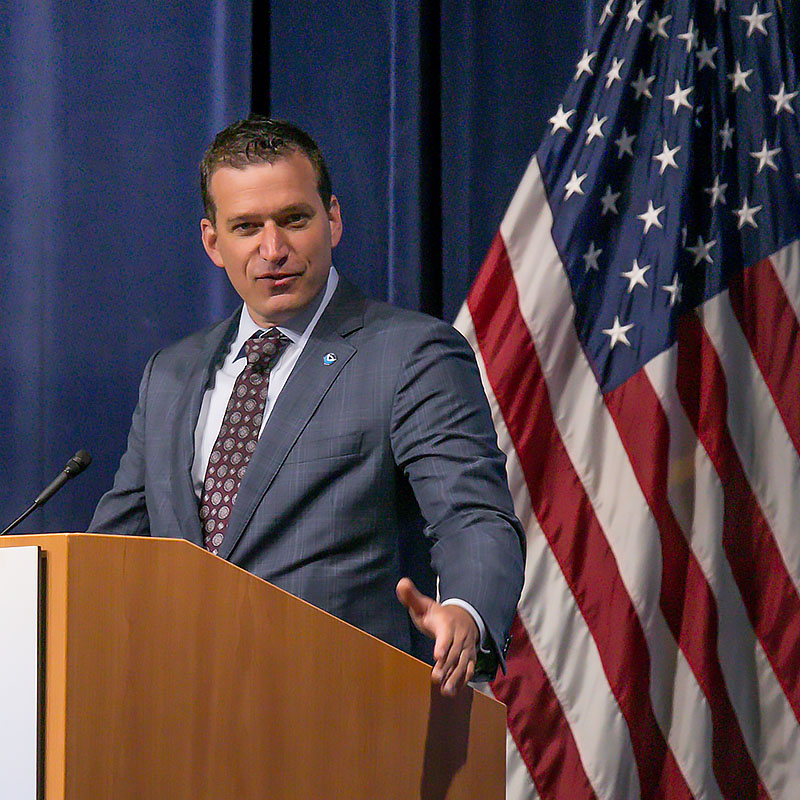“Cutting back on methane emissions is one of the most effective things we can do to reduce near-term global warming and keep to 1.5°C,” said Ursula von der Leyen, the European Commission president, referring at COP26 in Glasgow to the hard edge of emissions mitigation defined as part of the 2015 Paris Agreement.
More than 100 countries that are collectively responsible for 50% of global man-made methane emissions, subsequently became signatories to the Global Methane Pledge to reduce the amount of methane released into the atmosphere by at least 30% from 2020 levels by 2030. With that handing down of the gauntlet, national policies are now formulating, funds will be allocated to help emitting sectors deliver on the pledge, and investment in technologies that monitor and capture emissions will be incentivized. The wheels of motivation to mitigate methane emissions have been set in motion.
The oil and gas sector is responsible for roughly 30% of man-made methane emissions. As such it is likely to see comprehensive regulations applied to its operations in every signatory jurisdiction.

Stuart Levenbach, Executive for Policy & Funding in the Energy Transition team at Baker Hughes, says policy intended to drive emission reductions within the oil and gas industry needs to “address the entire energy value chain,” be cost-effective, performance-based, technology-neutral and tackle methane emissions from existing and new installations. “Taking a holistic approach,” he says, “is key to reducing methane emissions.”
“In our view, governments should start with the establishment of a robust monitoring, measurement, and reporting system,” he adds. The application of common standards to quantifying emissions and assessing reductions will result in comparative data that is most meaningful to cost-benefit analyses, to shareholders demanding evidence of greater sustainability, and to stakeholders up and down the industry’s supply chains — more of that later.
Pick methane, pick methane!
The two main reasons for targeting methane at COP26 relate to its low-hanging fruitfulness.
Firstly, although methane remains in the atmosphere for only 20 or so years compared to the persistence of CO2 for hundreds of years, it makes up around a third of global emissions. During its shorter lifespan it is more than 80 times as effective as CO2 at trapping heat in the atmosphere. Therefore, rapidly reducing methane emissions can have a significant and rapid effect on reducing global warming, which will help prevent a massive melting of global permafrost — an event that is expected to release millions of tons of greenhouse gases — and thereby prevent an aggressive and catastrophic feedback loop of emissions causing further emissions.
Secondly, technologies to monitor, detect, prevent or capture methane emissions already exist. Several solutions to reduce combustion, flaring, venting and fugitive driven emissions are available right now to help curb emissions that occur using conventional equipment. Baker Hughes’ flare.IQ helps to reduce methane slip from flaring operations, and zero bleed valves can help prevent emissions occurring in the first place.
How to form relevant, actionable policy
The policy team at Baker Hughes advises policymakers and the oil and gas industry alike on available solutions, and the costs of deployment. “Decision makers don’t necessarily have the market awareness that we have,” says Levenbach, yet over the coming months, they must run cost-benefit analyses of many pending regulations. Information on the investments companies will have to make to meet regulations is helpful to decision makers as they balance different interests to arrive at regulatory policies; it allows them to be confident that the industry can absorb the costs of compliance.
For example, the European Union and the United States led the COP26 initiative to massively reduce methane emissions. President Biden presented his US Methane emissions Reduction Action Plan, to the Glasgow conference. At home, that plan is being translated by the Environmental Protection Agency into a major regulatory action that will likely require oil and gas companies to reduce methane emissions from their facilities by 74% over the coming decade, compared with 2005 levels. The so-called EPA Proposal to Reduce Climate- and Health-Harming Pollution from the Oil and Natural Gas Industry will, for the first time, require emissions monitoring and repair requirements not only on new wells, but also on some 250,000 existing well sites. If implemented as proposed, the rule would prevent the release of around 41 million tons of methane (equivalent to 920 million tons of CO2) between 2023, when it is expected to be federally enacted, and 2035.
Baker Hughes is working both with customers who want to be on the front foot in adopting methane emissions-mitigation methods and with the EPA to ensure it is aware of available cost-effective technologies. “There is some cost recovery associated with zero-bleed valves and low-emission controllers,” says Levenbach, referring to methane saved and therefore added to the sellable stream of gas. The EPA has calculated that compliance with its new rule will result in the capture of otherwise wasted gas to the value of US$690 million in the US in 2030 alone. But there are costs to implementing methane-saving methods, and Levenbach believes they may work out to be less expensive than regulators have so far estimated.
First movers will protect their advantage
Across the oil-and-gas-producing world, similar policies are taking shape, and even non-signatories to the Global Methane Pledge are paying close attention to developments in the emissions policy sphere. “You’re going to have first movers and market laggards, and they may be laggards for a variety of reasons,” says Levenbach.
Baker Hughes contributes to public policy processes in different countries and acknowledges the many factors, such as energy security issues, as reasons for slower compliance.
However, says Levenbach, “The first movers are going to take steps to try to protect their economies, so they don’t lose economic activity to the market laggards.” In other words, countries and economic blocks such as the EU will seek to protect their regulated markets and investments in low-emissions technologies by instituting policies such as the EU’s Carbon Border Adjustment Mechanism (CBAM), which is currently being formulated.
When CBAM is finalized, says Levenbach, “it may have a significant influence on related policies in the US and other countries that want to export to Europe, but will face tariffs,” based on the carbon footprint of their products.
“There's probably no other area of public policy more dynamic than energy policy,” he adds, an observation drawn from Levenbach’s many years’ experience as a policy adviser within multiple offices within the Executive Office of the President of the United States.

Without benchmarking, reductions mean little
Heidi Stehling, Emissions Excellence Leader in the Energy Transition team at Baker Hughes, agrees. Her team accounts for emissions generated over the full value chain of Baker Hughes’ products, thereby setting benchmarks for improvement, and helping every Baker Hughes department, supplier, and customer to engage in meaningful emissions accounting. She says that as international policies emerge and sometimes collide, developing such frameworks is a challenging, constantly evolving task.
“It’s a paradox,” she says. “The idea is to measure and establish a baseline so that you can act very quickly, to understand all your emissions and do it with a consistent methodology in order to reduce. But because it’s so new, we’re figuring out how to establish the standards even as we’re reducing emissions. There’s a lot going on and it’s a really exciting space.”
Stehling’s Emissions Excellence team has developed the FastLCA (Life Cycle Assessment) tool, which is utilized across the organization to calculate cradle-to-grave GHG (greenhouse gas) emissions for individual Baker Hughes products. Its calculations then inform discussions and collaborations with Baker Hughes’ customers. “We help [our customers] understand what it is that they’re purchasing, and the environmental impact of the solutions they buy from us, and then how we can work together to reduce emissions in the application of our products — for example, how we can modify a gas turbine to work with cleaner fuel blends.”

The Fast LCA is currently a Baker Hughes proprietary tool, but Stehling says it too will be commercialized and available to customers. Understanding how to calculate and account for methane and other greenhouse gas emissions is critical. She says: “without being able to show your improvement and how you’re performing, the whole exercise doesn’t hold water.”
Leaping ahead of the competition and the regulations
Like Levenbach, Stehling believes that the global oil and gas industry will have a variety of reactions to policies designed to meet the Global Methane Pledge and that Baker Hughes is “well positioned” to address customer and regulator concerns.
Having reported its own greenhouse gas emissions to the Carbon Disclosure Project for the past 11 years and having made the commitment in 2019 to become carbon neutral by 2050, with an interim target of 50% reduction in its emissions by 2030, Baker Hughes is known for its emissions-management leadership among corporations and the industrial spheres in which it operates.
“It’s an important thing, to be a good steward to the environment and our precious planet,” says Stehling, who adds that for Baker Hughes and those it is helping to meet reduction goals, “it’s also a real competitive advantage.”
Levenbach says he sees a lot of corporate interest in “trying to be a good actor” and achieving greater operational sustainability. “There’s an advantage to being able to go into a decision maker’s office and say that you’re already adopting these best practices, that in fact, you’re ahead of the regulations.”
Energy Forward Stories
Sign up to stay up to date on the latest innovations and people shaping the future of our industry.





